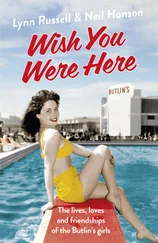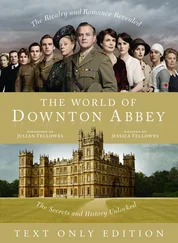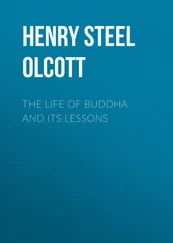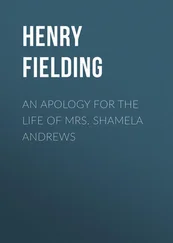A short distance from where we ate, there is a village called Chez Audebert. At some time in the nineteen forties, in the garden of a house right on the main road, a simple man began making three-quarter size statues in cement. He started with angels and children but gradually broadened his interests to include de Gaulle, Elvis, and Marilyn Monroe. There is a man who might or might not be Jean Gabin and another who resembles Danny Kaye. The sculptor of Audebert made dogs – most of them with impudent, knowing grins – birds, owls and lions. There are nudes of young girls with their arms held out in innocent welcome, knock-kneed schoolchildren, and peasants like himself lurching home along a dusty track. Some of the people depicted carry briefcases and smoke jaunty pipes. Gradually his garden filled up with maybe a hundred statues, all arranged higgledy-piggledy. When he died, his widow left the gate open for anyone to visit and so it stands today. Whenever two or more people are in the garden, the living are quickly trapped in the arms and legs, breasts and buttocks of this mysterious sculpture park. If they are motionless for a moment, it is sometimes difficult to separate them from the statues all around.
We don’t know why the Audebert villager made these sculptures and they are regarded with an embarrassed condescension by his neighbours. Mme Ayraud’s comment is typical: ‘Pouf! He was not an artist, he was a poor man who had big ideas. That sort of thing never works.’ It is true that one Audebert figure on its own would be disappointing. A hundred are a different matter.
The great attraction of the Mémoires Weldon is a similar plenty. Georgina wrote as she spoke, pell-mell. The pages are crowded, noisy, exuberant and give a view of the nineteenth century that is not often recorded. As to her purpose in writing, one of the striking things about Georgina Weldon’s search for justice is the degree to which she incriminates herself. Many of the things that can be held against her – her high-handedness, her occasional cruelties, the want of a sense of humour which might have protected her from some of her disasters – come direct from her own narrative errors. The more she struggles, the deeper she sinks.
There is nevertheless great beauty in her story. ‘It’s the faith in what is good, what is beautiful and just that has armed my natural convictions,’ she wrote. ‘Gounod always called me his Jeanne d’Arc – others have called me Madame Don Quixote, a visionary, a utopian.’ After all the flim-flam and absurdity that dogged her has been discounted, these are the words that stick in the mind. How true they are is the subject of the present book.
I should like to thank some people for their help and wise comments. Mrs Wendy Hill followed the London end of the story with a sharp eye for topographical detail. In Paris, Kay Dumas plunged into the Bibliothèque Nationale shortly after its removal to new premises and survived to tell the tale. I am grateful to the staff of the Bodleian Library; Trinity College Cambridge Library; East Sussex County Records Office and the Staff of the Brighton Central Library. Elizabeth North gave me support and a novelist’s insights into the central character and suffered her presence in the life we share with unfailing good humour. As every author knows, some works are happier to see through to a conclusion than others. This has been a happy book, for which I am indebted to David Miller and Rebecca Wilson, more than I can say here. Finally – and to adapt a useful phrase from the screenwriter William Goldman – the energy and enthusiasm of a brilliant editor, Arabella Pike, ensured that when the thing was fixed, it was fix-fixed.
BRIAN THOMPSON
February 1999
Georgina Weldon was never quite the performer and entertainer nor the grand lady or talked about social lioness she so fondly invented for her readers. Her story starts with parents and a childhood of such a cranky nature that they must be examined with the care she gave to later episodes of her life. Her troubles started the day she was born, when she was presented with a mask fashioned for her by parents who were the kind that could not distinguish easily between the truth and a lie.
She came into the world on 24 May 1837. All day long the London streets were filled with people, running to see the Life Guards pass by or hanging on the Hyde Park railings to gawp or jeer at the rich. The greatest aristocratic houses in England were represented by the comings and goings of their lumbering and oversprung coaches, issuing from the squares about Mayfair and Belgravia. In the tens of thousands that milled about on foot there was that strange unvoiced sense of the exceptional that sometimes characterises how mobs behave. Londoners normally turned out in such numbers only to riot or exhibit their feral curiosity – a fortnight earlier, for example, 20,000 had gathered at Newgate to watch the murderer Greenacre hanged. Today the mood was different. The word sightseer was a brand new coinage and exactly suited the occasion. Placid and orderly citizens of all classes wandered down the Mall to inspect the newly completed but untenanted Buckingham Palace, where it was said few of the thousand windows would open and many of the doors were jammed in their frames by green timber and shoddy workmanship. Directly in front of the place squatted the enormous and foreign-looking Marble Arch, on top of which was to have stood an equestrian statue of George IV, a piece of triumphalism only averted by his death and the colossal overspend on the whole project.
There were many such examples of the new and the bold to gaze on. London, in its West End, was being almost entirely remodelled. Ancient lanes and houses had been pulled down and greenfield sites opened. Behind Buckingham Palace, the ingenious Mr Cubitt was bringing soil from his excavation of St Katherine’s Dock at Tower Bridge along a canal that cut up from the Thames to the site of the present Victoria station. His purpose was to fill the marshy land round about and complete the building of Belgravia for his client, Lord Grosvenor. It was the showpiece of property development in the entire city. Filling marshes, levelling huge tracts was becoming a commonplace in that part of London. Thomas Cubitt’s plans for neighbouring Pimlico involved the wholesale tearing up of ancient market gardens: farms, even rivers were not to stand in his way. Though it was true the speculation in property was running into something of a slump, the check was only temporary. The scale of new building in the capital was greater than anything seen before. For a brief moment this sunny Wednesday, London stood still and took stock of itself.
For the nobility it was an important working day and most of those who peered from their coaches were in court dress. They were summoned in celebration of Princess Victoria’s eighteenth birthday, which began with the formalities of an audience in the Drawing Room at Kensington Palace. It was an occasion of the greatest significance, for under the constitutional arrangements made for her, the Princess at last burst free from the clutches of her mother the Regent. Those people of rank who attended the young Victoria that morning witnessed a telling little piece of theatre. One of the many visitors she received was the Lord Chamberlain, who had ridden from Windsor with a letter from the King. The Duchess of Kent held out her hand to receive it on behalf of her daughter. Lord Conyngsby ignored the gesture and very pointedly gave the letter direct to the Princess. What was long promised had now become fact: the next monarch would be this almost unknown, unmarried young woman. As everyone understood, her accession was not far off. George IV had been fifty-eight when at last he became king and his brother William IV succeeded him aged sixty-five. The taint of madness and scandal hung over both reigns. If God should spare Victoria, Britain could anticipate a profoundly different future.
Читать дальше
![Brian Thompson A Monkey Among Crocodiles: The Life, Loves and Lawsuits of Mrs Georgina Weldon – a disastrous Victorian [Text only] обложка книги](/books/704922/brian-thompson-a-monkey-among-crocodiles-the-life-cover.webp)











